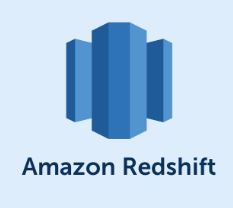In the world of big data and data analytics, Apache Hive plays a pivotal role by providing a SQL-like interface for querying and managing large datasets stored in Hadoop Distributed File System (HDFS). One of the key features that enhances Hive’s efficiency and flexibility is the use of external tables. In this article, we’ll delve into the advantages of using external tables in Hive, along with a detailed example to illustrate their power. Using external tables in Hive offers data engineers and analysts the flexibility, efficiency, and scalability required to work with diverse data sources and evolving schemas. By decoupling data from the Hive warehouse and leveraging data location independence, you can streamline data management and improve query performance, making Hive an even more powerful tool in your big data arsenal.
Understanding external tables
Before we dive into the advantages, let’s understand what external tables are. In Hive, a table can be either managed or external. Managed tables are tightly coupled with the Hive Metastore, while external tables are associated with data stored outside the Hive warehouse directory. They provide a layer of abstraction over data, making it easier to work with various data sources.
Advantages of using External tables
- Data location independence: One of the primary advantages of external tables is that they are not bound to the Hive warehouse directory. This means you can work with data residing in different locations, including HDFS, cloud storage, or even external databases. It allows for more flexibility in managing diverse data sources.
- Reduced data duplication: With external tables, you don’t need to duplicate data within the Hive warehouse. This reduces storage costs and avoids unnecessary data replication, especially when dealing with large datasets.
- Schema evolution: External tables facilitate schema evolution by allowing you to add, modify, or remove columns without altering the underlying data. This flexibility is crucial in real-world scenarios where data schemas evolve over time.
- Ease of data ingestion: You can easily ingest data into Hive external tables from different sources using tools like Apache Sqoop, Apache Nifi, or simply by copying data into the specified location. This simplifies the data ingestion process.
- Query performance: External tables can significantly improve query performance. Since they are not constrained by the Hive warehouse directory structure, queries can be optimized to read data directly from its original location, reducing data movement and improving query execution speed.
Example: Using external tables in Hive
Let’s illustrate these advantages with a practical example. Suppose you have data stored in an HDFS directory named /external_data in the following format:
/external_data
|-- employee_data
| |-- employee_id
| |-- employee_name
| |-- employee_salary
|-- department_data
| |-- department_id
| |-- department_name
To create external tables for this data in Hive, you can use the following SQL commands:
-- Create an external table for employee data
CREATE EXTERNAL TABLE IF NOT EXISTS employee (
employee_id INT,
employee_name STRING,
employee_salary DECIMAL
)
ROW FORMAT DELIMITED
FIELDS TERMINATED BY ','
LOCATION '/external_data/employee_data';
-- Create an external table for department data
CREATE EXTERNAL TABLE IF NOT EXISTS department (
department_id INT,
department_name STRING
)
ROW FORMAT DELIMITED
FIELDS TERMINATED BY ','
LOCATION '/freshers_in/external_data/department_data';
Now, you can query these tables just like any other Hive table, benefiting from the advantages mentioned earlier.
Hive important pages to refer








